neta bomani is a learner and educator who is interested in understanding the practice of reading and parsing information as a collaborative process between human and non-human computers...
- School for Poetic Computation
- The Kitchen Video Viewing Room
- dark matter objects: technologies of capture and things that can't be held
- direct action for prison aboliton
- zines
- AI.Assembly
- Mask On
- Black Photo Booth
- Groundhog Day: The Killing of Bonita Carter
- Cybernetics of Race/ism
- Code Societies
- Out of the Black Box
- Poetic Computation: Detroit
- Arts in the Libraries: Code, Craft, Catalogues
- Wikipedia Edit-a-thon
- Creative Savior Complex
- Finding the Blank Spots in Big Data
- Radical Black Women of Harlem Tour
- Tech Zine Fair
- memory for a stateless person
- No Sleep No Breaks
- CV
This website was designed & coded by Neta Bomani.
Font is Courier, a default monospace font found on most computers.
Feel free to share any archival materials you find here as long as you properly attribute all the people cited & link back to this website.
Last updated 08-30-2022.
archive
Code, Craft & Catalogues: Arts in the Libraries
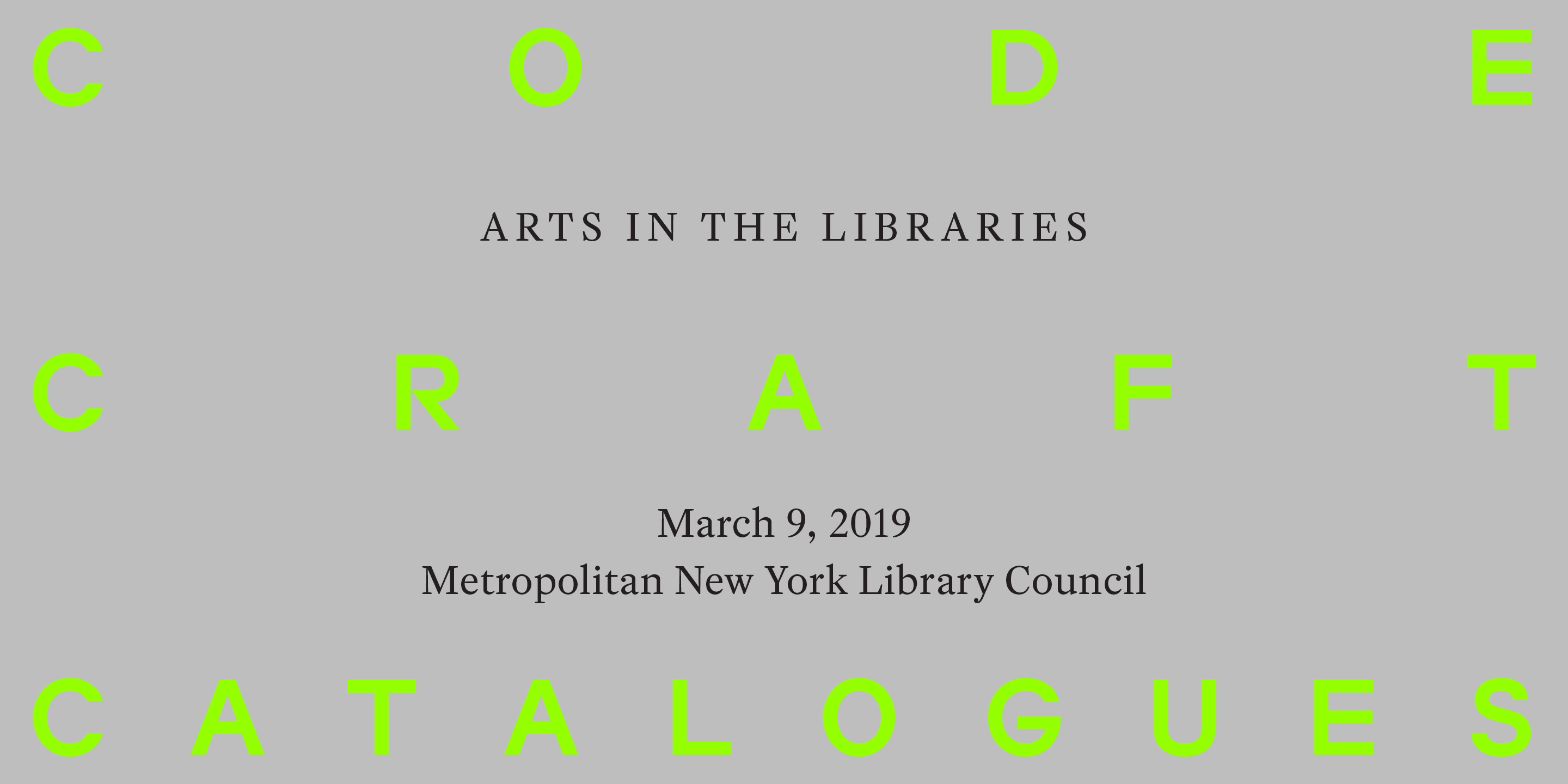
Design by Johanna Lundberg.
On March 9, 2019, myself and the Cybernetics Library (Melanie Hoff, Dan Taeyoung, Sarah Hammerman and David Hecht) led a workshop at Metro Studio for “Code, Craft & Catalogues: Arts in the Libraries,” a half-day symposium co-organized by the Metropolitan New York Library Council, the Finnish Cultural Institute in New York and the New School.
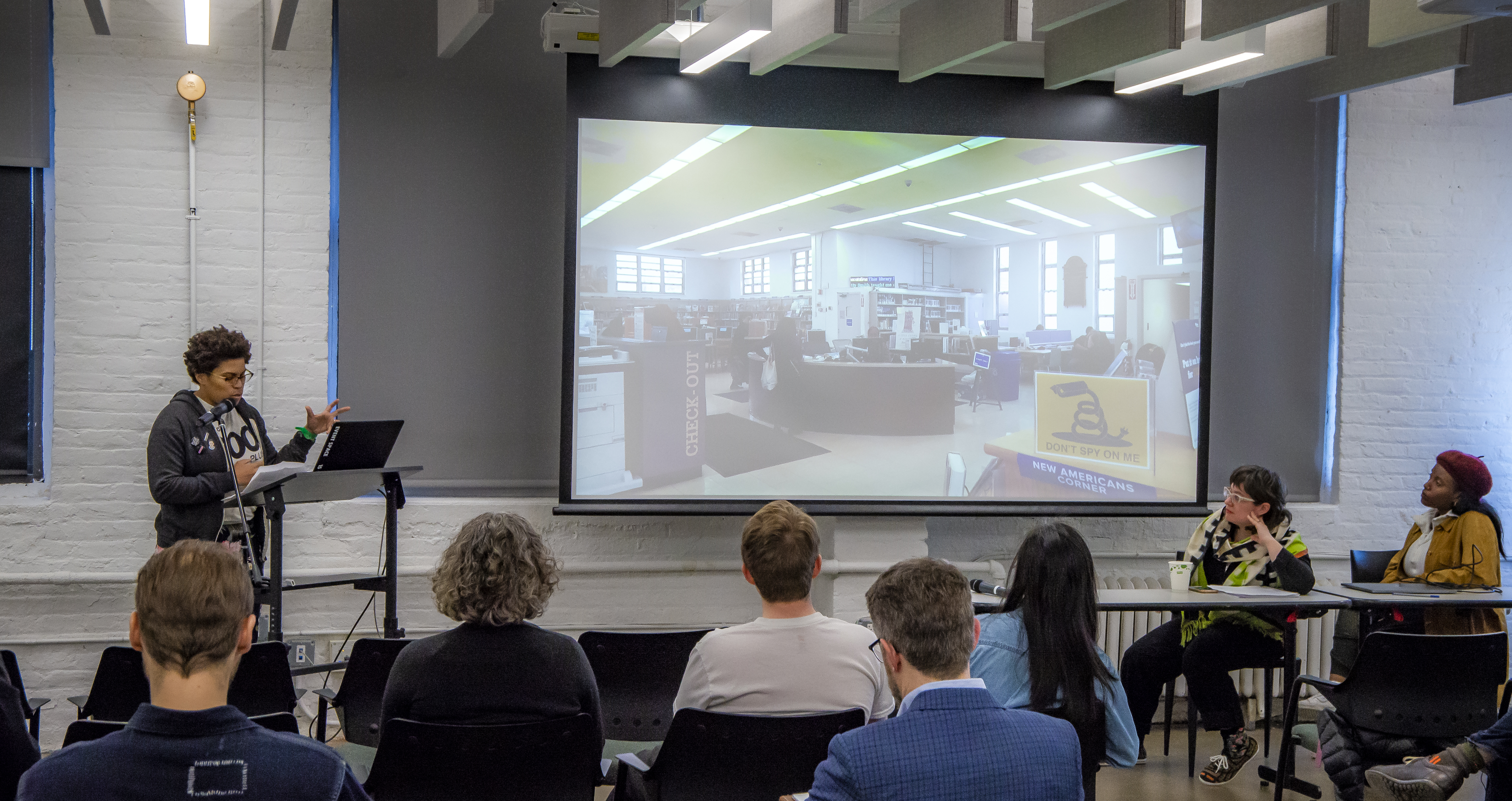
Toisha Tucker presenting to the left of a projector in the center on the first panel entitled “Privacy in Public.” The panel featured Tucker alongside Salome Asega and Greta Byrum, who are sitting at tables to the right of the projector and watching Tucker present. Some panel attendees are shown in the foreground of the image. Photo by Aidan Grant.
The symposium, which consisted of three panels presented by Greta Byrum, Toisha Tucker, Salome Asega, Anni Vartola, Laura Norris, Jussi Parikka, Ilari Laamanen, Trent Miller, Jer Thorp, Burak Arikan and Kameelah Janan Rasheed, discussed the following:
“What role do the arts and design play in today’s libraries? Our major public institutions frequently commission high-profile public art, some libraries feature dedicated exhibition space, and artists and designers have long drawn inspiration from archival and library collections. Yet today, as we access and create knowledge through an expanding array of designed platforms and interfaces, infrastructures and algorithms, aesthetic operations are integral to the core services that libraries provide. We see a growing number of library- and archive-based artists’ residencies and exhibitions, and expanding interest in more sustained collaborations across the library and art worlds. In this symposium we gather librarians, artists, designers, and representatives from allied fields to examine recent examples of library-centered creative practice, discuss the mutual benefits of such collaborations, and propose new models for growing and sustaining these partnerships.” —Shannon Mattern
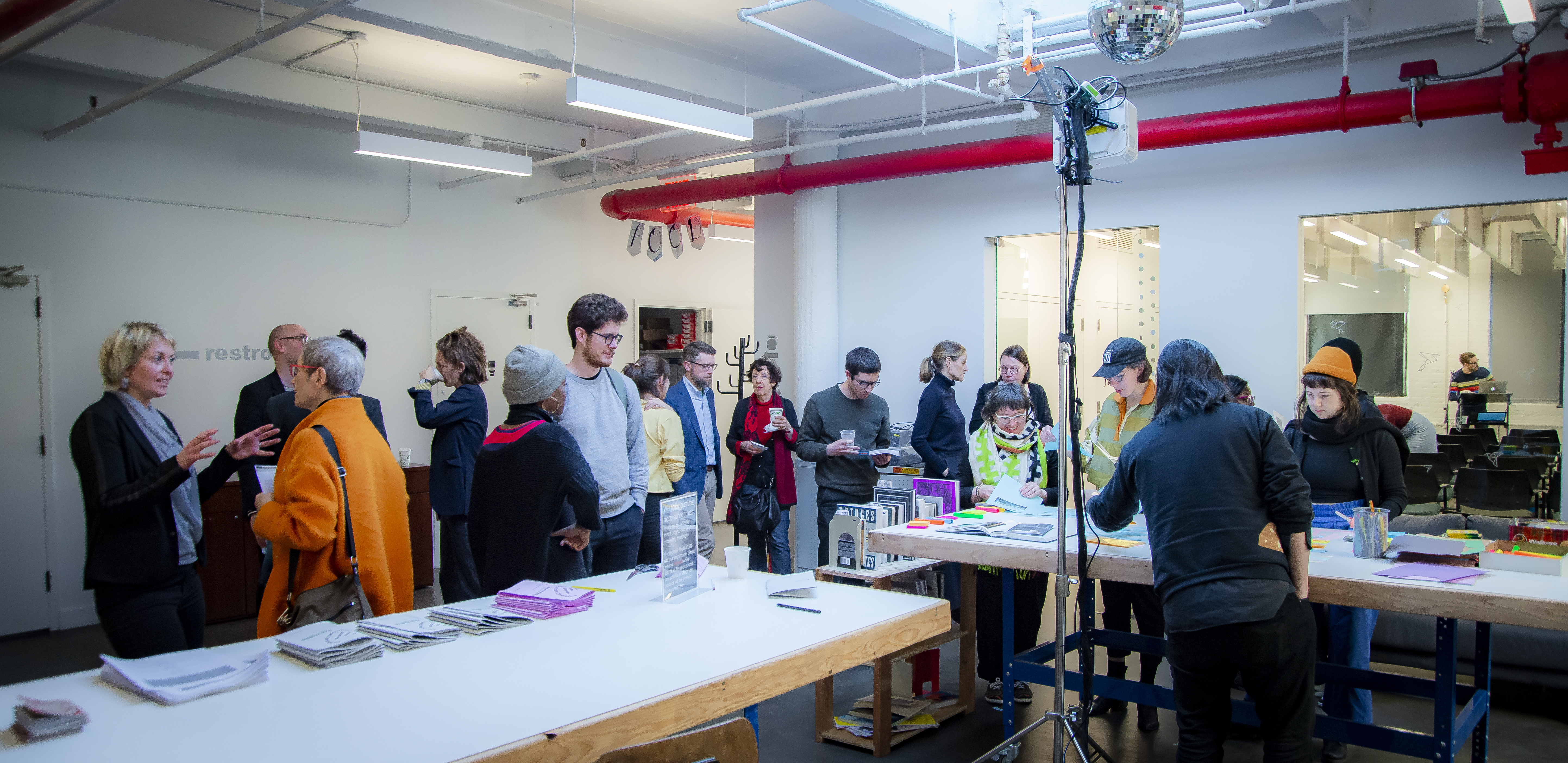
Two large white work tables perpendicular to one another made up what we called the Zine Hub. Participants are crowded around the tables, socializing and/or crafting a zine on the table to the right. Photo by Aidan Grant.
The Cybernetics Library and I live documented the event in the form of a zine-making workshop. Participants took part in a collective note-taking exercise to experiment with social archiving as art. Our objective was to encourage participants to think about creating an archive the extend beyond the livestream, Twitter feed etc. and to consider experimenting with archiving the social environment at Metro Studio, how they felt in their bodies and generative ideas which formed as a result of the panels and interactions throughout the symposium.
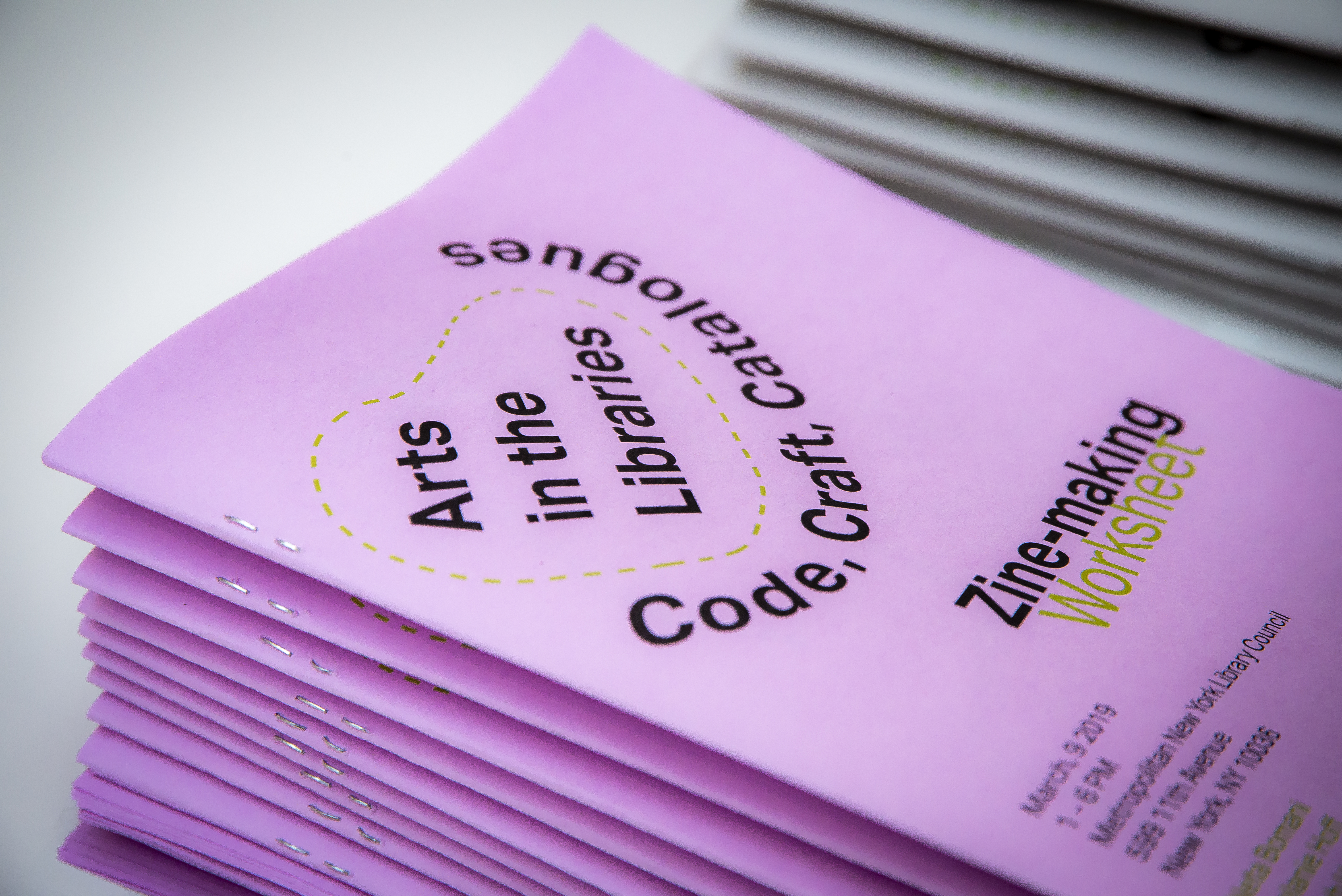
A close up of a stack of 10-15 worksheets printed on neon purple paper. The main title reads, “Arts in the Libraries” stylized in a black colored sans-serif font surrounded by a blob shape with a neon green dashed outline. The subtile reads, “Zine-making Worksheet.” Photo by Aidan Grant.
To facilitate, we created a worksheet filled with prompts like:
- Do you feel like people who look like you are well represented in the room and/or on the panels?
- Describe the shoes you’re wearing.
- What are your first memories of libraries?
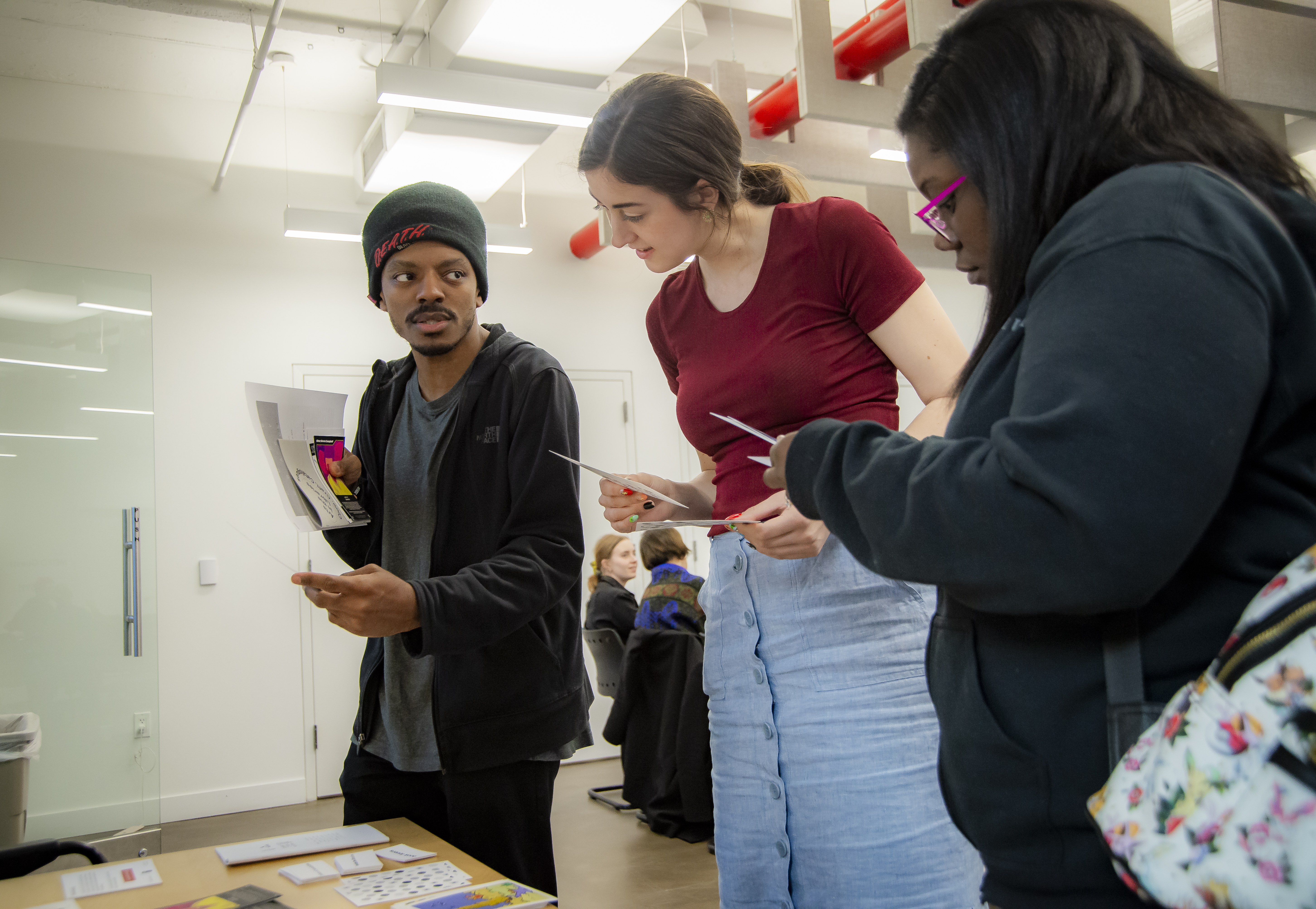
Three workshop participants check out printed matter available at Metro Studio. Photo by Aidan Grant.
Participants were instructed to:
- Take notes in the zine-making worksheets during the panel(s),
- Tweet with the #artsinlibraries hashtag,
- Browse the pop up Cybernetics Library which consisted of curated books related to the talks,
- And physically and digitally collage pieces from their worksheets, printed tweets, and photocopies from book pages for each panel to make up a total of three spreads for the zine using the scryer table created by the Cybernetics Library.
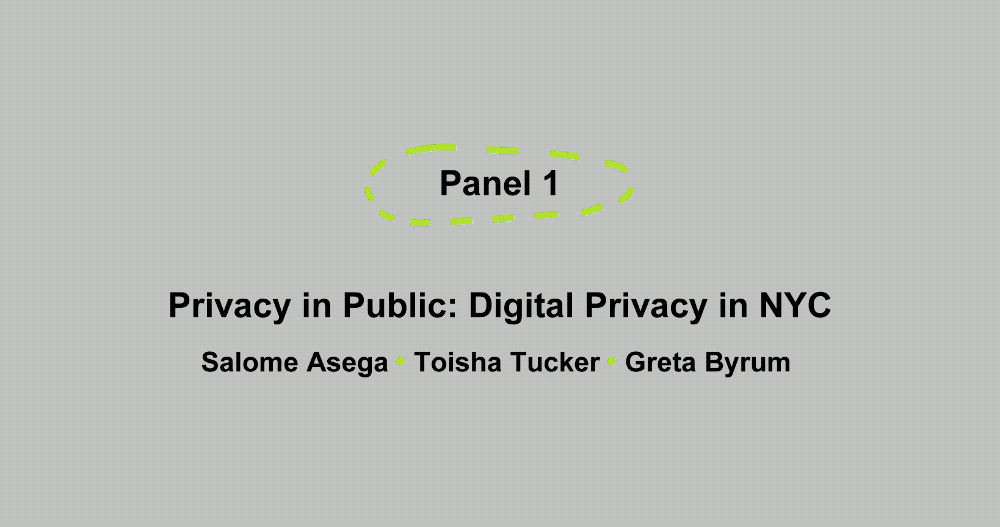
Timelapse of the creation of the zine. Each spread of the zine corresponded to each if the three panels that happened during the symposium.
By the end of the symposium, we made a zine which you can download and print here.